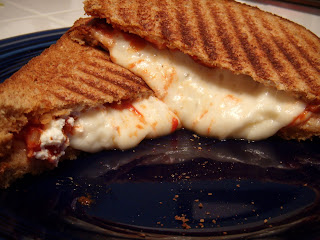Prosciutto and Parmesan Gougères
½ stick unsalted butter (4 T) cut into small pieces
½ C water
¼ t fine salt
1/8 t granulated sugar
¾ C all-purpose flour
3 large eggs (plus one lightly beaten egg)
½ C finely grated Parmesan cheese (2 oz)
6 T finely chopped prosciutto (about 1 ½ oz)
1 pinch freshly grated nutmeg
1 pinch paprika
Preheat oven to 400 degrees; place a rack in the center of the oven.
Combine the butter, water, salt and sugar in a medium sauce pan over medium-high heat; bring to a boil. Immediately remove from heat and add the flour, beating vigorously with a wooden spoon until smooth.
Place the pan back over medium-high heat; cook, stirring constantly, until a smooth mass forms and pulls away from the sides of the pan, about two minutes. The bottom of the pan will be coated with a thin crust.
Transfer the choux paste to the bowl of an electric mixer fitted with the paddle attachment. On medium speed, add the three eggs, one at a time, mixing well after each addition. Add the parmesan, prosciutto, nutmeg and paprika.
Using a pastry bag fitted with a ½-inch round tip, pipe the warm choux paste onto parchment-lined baking sheets, forming mounds about ¾-inch in diameter. (Note: you may need to use a knife to cut off the choux paste when piping.) Lightly brush just the tops with the beaten egg, then gently smooth with wet fingers. (Note: Be careful to avoid dripping the egg down the sides of the mounds, as this may inhibit rising.)
Place in the preheated oven and bake for 15 minutes. Reduce oven to 375 degrees and continue baking until puffed and golden brown, about 20 minutes more. Transfer the gougères to a wire rack, cool slightly and serve warm or at room temperature.



The recipe says to bake them for an additional 20 minutes once you reduce the heat, but I actually put mine back in for about another 5-8 minutes when I took them out at the 20-minute mark to taste test them. The inside was still a little wet and hadn't dried out, so I let them go a little while longer. That extra few minutes really did the job, and they were fantastic! The egg glaze is what makes them so glossy, and it's really easy to pop three or four at a time until you realize the entire batch has been demolished. These would really be great for a pre-Thanksgiving appetizer or for a housewarming party.











